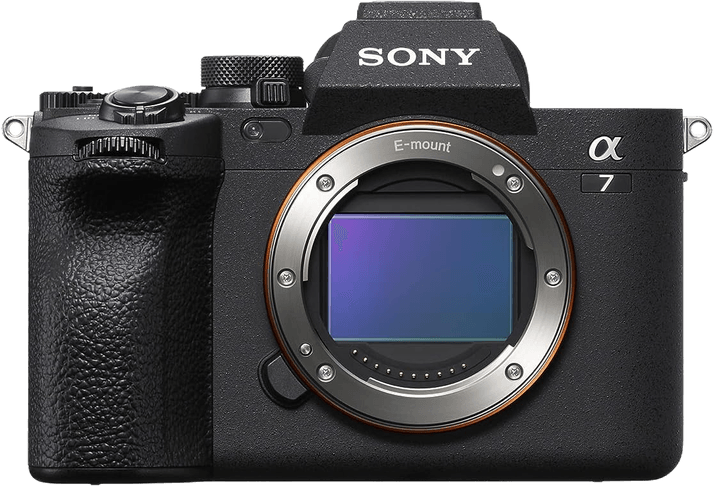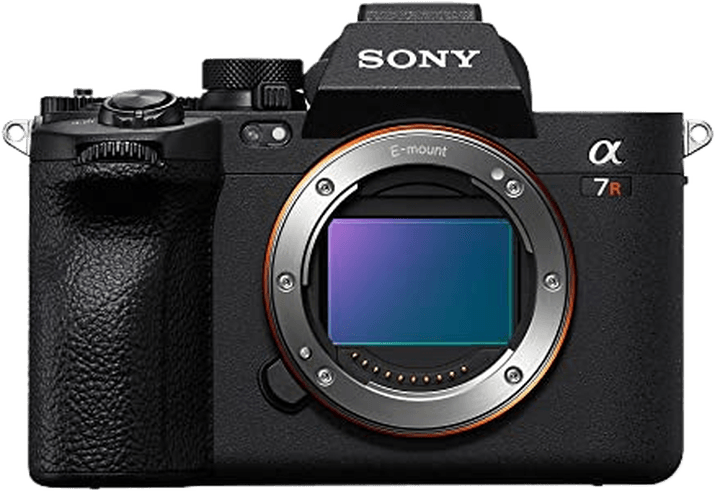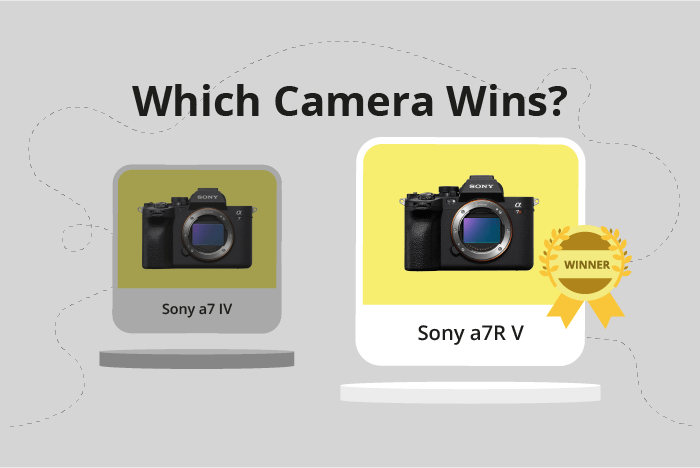Sony a7 IV vs a7R V Comparison
Sony a7 IV

Sony a7R V

The Sony a7R V narrowly edges out the Sony a7 IV with a score of 85/100 compared to 84/100. Both cameras are mirrorless and share similar dimensions, with the a7 IV measuring 131 x 96 x 80mm and the a7R V at 131 x 97 x 82mm. They were released relatively close to each other, with the a7 IV in 2021 and the a7R V in 2022.
The a7R V’s higher score reflects its superior performance in certain areas. However, the a7 IV has its advantages as well, including a lighter weight of 659g compared to the a7R V’s 723g. This difference makes the a7 IV more portable and easier to handle during extended shooting sessions.
On the other hand, the a7R V justifies its higher score and price tag of $3999 compared to the a7 IV’s $2499. While specific features are not provided here, the a7R V likely offers improvements in image quality, autofocus, and other key aspects that photographers value.
Taking these factors into account, the Sony a7R V is the better camera in terms of overall performance. However, the Sony a7 IV remains a compelling option for those seeking a lighter and more affordable alternative without sacrificing too much in terms of features and capabilities.
Sony a7 IV vs a7R V Overview and Optics
The Sony a7 IV and Sony a7R V both score 85/100 for optics, making it a tie in this category. Both cameras share several specifications, such as a CMOS sensor, Bionz XR processor, full-frame sensor size, Sony FE lens mount, and image stabilization. Their shooting speed is also identical at 10 frames per second.
The Sony a7R V stands out with its higher megapixel count of 61, compared to the Sony a7 IV’s 33 megapixels. This difference allows the a7R V to capture more detailed images, making it suitable for large prints and cropping without losing image quality. Additionally, the a7R V may be more appealing to professional photographers who require high-resolution images for their work.
On the other hand, the Sony a7 IV has a higher DXOMARK score for its sensor, with a score of 97 compared to the a7R V’s 94. The higher score indicates that the a7 IV’s sensor performs better in terms of dynamic range, color depth, and low-light performance. This advantage makes the a7 IV a more versatile camera, capable of handling various shooting situations and lighting conditions.
Both cameras excel in different aspects of optics. The Sony a7R V is the better choice for photographers who prioritize high-resolution images, while the Sony a7 IV offers a more versatile sensor performance. Ultimately, the decision between these two cameras depends on the specific needs and preferences of the photographer.
Sony a7 IV vs a7R V Video Performance
The Sony a7R V outperforms the Sony a7 IV in terms of video capabilities, scoring 100/100 compared to the a7 IV’s score of 91/100. Both cameras share common features, such as a maximum video frame rate of 120fps and built-in time-lapse functionality. However, the a7R V surpasses the a7 IV in certain aspects, making it the superior choice for video performance.
The primary advantage of the Sony a7R V is its 8K maximum video resolution, with dimensions of 7680 x 4320. This higher resolution produces significantly more detailed and crisp footage than the Sony a7 IV, which has a maximum video resolution of 4K and dimensions of 3840 x 2160. The a7R V’s 8K resolution allows for greater flexibility in post-production, such as cropping and reframing, without losing quality.
Although the Sony a7 IV has a lower video score and resolution, it may still be a suitable option for users who do not require the highest possible resolution for their projects. The a7 IV’s 4K resolution is still sufficient for many applications, including social media content, vlogging, and lower-budget productions. Additionally, the a7 IV’s lower resolution may result in smaller file sizes and faster processing times, which could be beneficial for some users.
Considering the differences in video capabilities, the Sony a7R V is the clear winner for those seeking the highest quality and resolution in their video projects. While the Sony a7 IV may be a viable option for users with less demanding video needs, the a7R V’s superior video performance and 8K resolution make it the better choice overall for serious videographers and professionals.
Sony a7 IV vs a7R V Features and Benefits
The Sony a7R V outperforms the Sony a7 IV in features, scoring 87 out of 100 compared to the a7 IV’s score of 83. Both cameras share several specifications, including touchscreen capabilities, flip screens, WIFI, and Bluetooth connectivity. However, neither camera has GPS functionality.
The a7R V’s superiority is evident in its larger screen size and higher screen resolution. At 3.2 inches, the a7R V’s screen is 0.2 inches larger than the a7 IV’s 3-inch screen. Additionally, the a7R V boasts a screen resolution of 2,100,000 dots, which is significantly higher than the a7 IV’s 1,040,000 dots. These differences provide a7R V users with a better viewing experience and more precise image review.
On the other hand, the a7 IV still offers good features, albeit with a slightly lower score. The camera has a smaller screen size and lower resolution, but retains the touchscreen, flip screen, WIFI, and Bluetooth capabilities found in the a7R V. These features make the a7 IV a reliable choice for photographers who prioritize connectivity and ease of use.
Considering the differences in feature scores and specifications, the Sony a7R V is the superior camera in terms of features. Its larger screen size and higher resolution provide a better user experience, while still offering the same connectivity options as the a7 IV. Meanwhile, the Sony a7 IV remains a solid option for those who value convenience and connectivity, even with its lower feature score and smaller screen size.
Sony a7 IV vs a7R V Storage and Battery
The Sony a7 IV wins the storage and battery comparison with a score of 76/100, while the Sony a7R V scores 73/100. Both cameras have two memory card slots, accepting CFexpress Type A and SD cards, with the a7 IV being UHS-II compatible and the a7R V accepting SD/SDHC/SDXC cards. They also share the same battery type, NP-FZ100, and offer USB charging capabilities.
The a7 IV outperforms the a7R V in battery life, providing 580 shots per charge, compared to the a7R V’s 530 shots. This longer battery life makes the a7 IV more suitable for extended shooting sessions without needing to change batteries.
The a7R V, despite its lower score, still offers reliable storage and battery performance, making it suitable for most photography needs. However, the a7 IV’s longer battery life and UHS-II compatibility give it a slight edge in this aspect.
Considering the storage and battery capabilities, the Sony a7 IV proves to be the better choice for photographers who prioritize longer battery life and faster memory card compatibility. The a7R V remains a strong contender, but the a7 IV takes the lead in this comparison.
Alternatives to the Sony a7 IV and a7R V
Are you still undecided about which camera is right for you? Have a look at these popular comparisons that feature the Sony a7 IV or the Sony a7R V:

